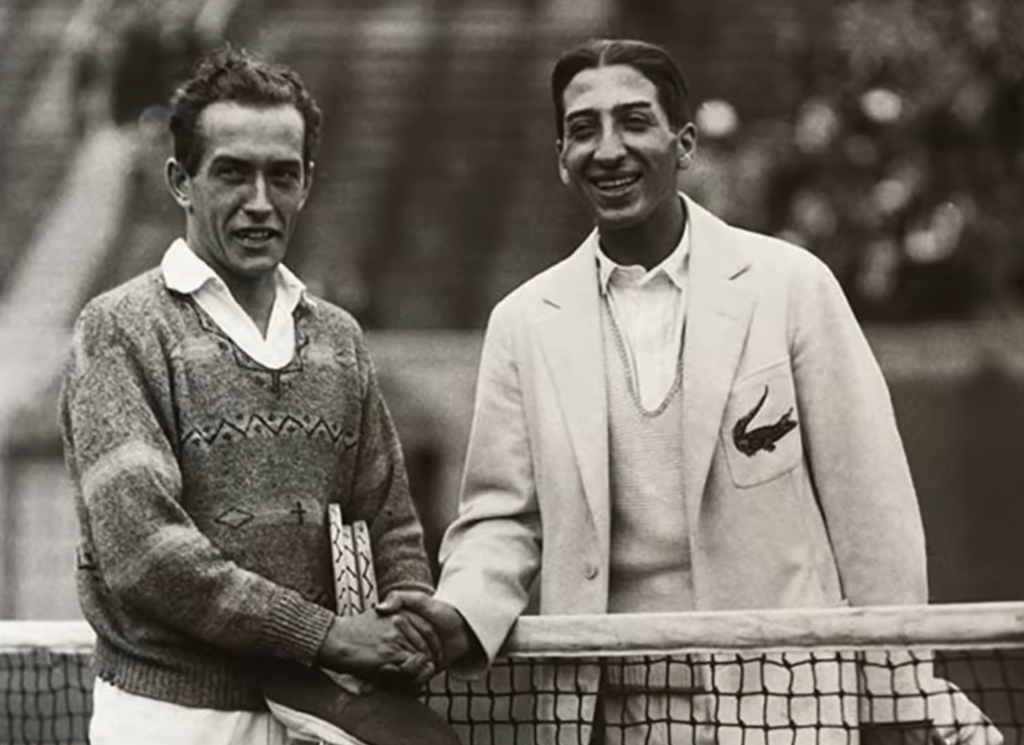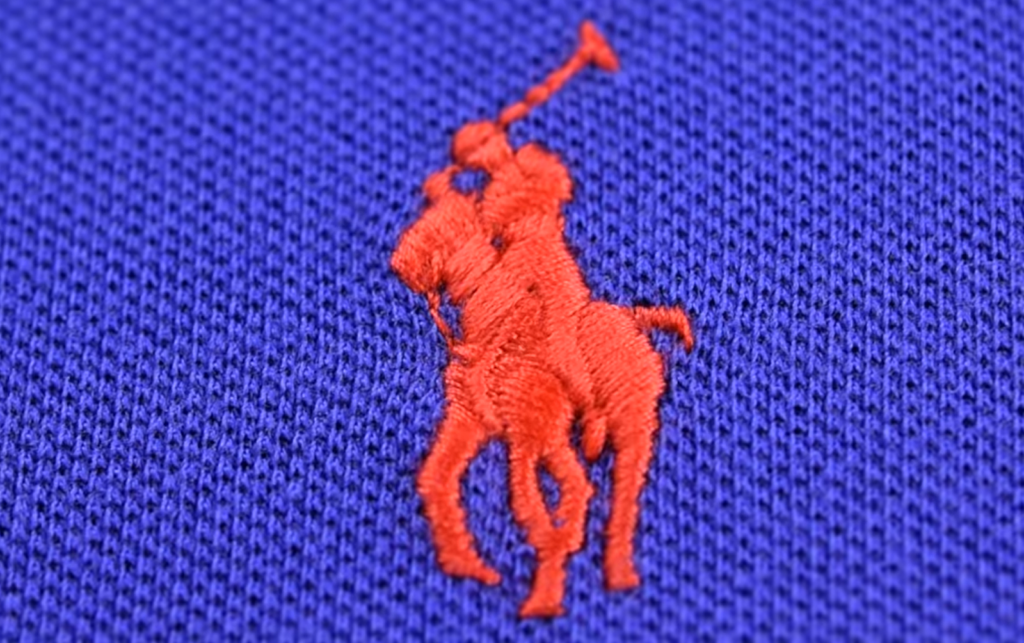From a diverse range of vibrant fashion statements to a staple in the wardrobe of college students and a common sight in back-to-school uniforms, the polo shirt stands out as one of the most influential elements in the world of fashion.
Celebrities spanning from James Bond to Steve McQueen, and even the iconic “Wolf of Wall Street” have proudly donned these shirts. However, contrary to popular belief, the polo shirt and the sport of polo share little in common.
In reality, the polo shirt was originally conceived for the sport of tennis as a more comfortable alternative. The sport of polo, with its wit and charm, cheekily adopted this attire for its own use.
Polo Attire Before the Polo Shirt: A Glimpse into the Past
In the early days of polo, there was no standardized uniform for players. Instead, they relied on numbered jerseys to distinguish their positions on the field. The typical attire for male polo players consisted of trousers paired with a classic white button-down shirt.
Interestingly, this attire wasn’t exclusive to polo but a common choice for many sports, reflecting the fashion norms of the time. However, these garments had their drawbacks when it came to providing the necessary comfort and freedom of movement required in athletic endeavors.
In a charming twist, British polo players often took matters into their own hands, literally. To prevent their shirt collars from flapping about during a match, they would meticulously sew extra buttons onto each collar, adding a touch of practicality to their sports attire.
| Year | Event |
|---|---|
| 1896 | John E. Brooks introduces the first button-down polo shirt in the United States. |
| 1926 | René Lacoste introduces the first white, short-sleeved, piqué cotton tennis shirt. |
| 1933 | Lacoste collaborates with a clothing merchandiser to establish “Chemise Lacoste” brand. |
| 1951 | The merchandiser partners with Izod to bring Lacoste’s polo shirts to the U.S. market. |
| Mid-20th Century | The polo shirt becomes part of the standard attire for polo players. |
| Late 20th Century | Ralph Lauren popularizes the polo shirt and names his label “Polo Ralph Lauren.” |
| 1980s-1990s | Polo shirts embraced in hip-hop culture, gaining popularity in streetwear. |
The Origins of the First Polo Shirt
During a visit to England, John E. Brooks, the son of John Brooks, made a pivotal discovery. He noticed that polo players across the pond were wearing shirts with button-down collars. Recognizing the practicality and style of this design, he decided to introduce it to the United States.
In 1896, the adaptation of these button-down collared shirts marked a significant milestone in the world of fashion. John E. Brooks proudly introduced what would become known as the first button-down polo shirt, forever changing the landscape of men’s attire in the United States.
The Original Sport of Polo Shirts: Where Did They Begin?
Long before becoming a staple in various sports, polo shirts had a surprising start in tennis attire. Tennis players, much like their counterparts in polo, used to wear long-sleeved button-up shirts, albeit with their sleeves rolled up. This traditional tennis attire, however, posed a significant discomfort as the sleeves had a tendency to roll down, hardly ideal for a sport that required agile racquet movements.

Enter René Lacoste, a renowned French tennis player with seven Grand Slam victories to his name. Frustrated with the impracticality of traditional tennis wear, he took matters into his own hands. In 1926, he introduced a groundbreaking innovation to the tennis world: the first white, short-sleeved, loosely-knit piqué cotton shirt. This shirt featured a collar and a buttoned placket, addressing the discomfort that had plagued tennis players for years.
Lacoste debuted this revolutionary shirt at the 1926 U.S. Open, where he not only showcased his style but also clinched the gold medal in the Men’s Singles category.
It wasn’t until 1933, after his retirement from tennis, that Lacoste collaborated with a clothing merchandiser to establish the brand “Chemise Lacoste,” featuring the iconic embroidered logo on the left breast. In 1951, the merchandiser struck a significant deal with the U.S. garment brand Izod, bringing Lacoste’s innovative polo shirts to American shores and forever changing the way we dress for both sports and casual occasions.
The Polo Shirt’s Journey to the World of Polo
The polo shirt’s evolution into a symbol of the sport of polo is a fascinating story with several key players involved.
Lew Lacey, an English polo player originally from Canada, played a pivotal role in bringing the polo shirt into the limelight. He introduced a shirt featuring an emblem of a polo player while at the Hurlingham Club near Buenos Aires, Asociación Civil Hurlingham Club, a move that marked the beginning of the polo shirt’s association with the sport.
However, the true integration of the polo shirt and white trousers into the world of polo occurred around the mid-20th century. It was during this time that the polo shirt began to find its place as part of the standard attire for polo players.
But perhaps the most iconic moment in the history of the polo shirt came with Ralph Lauren, who not only popularized the garment but also named his label after the sport itself: Polo Ralph Lauren. This move not only associated polo shirts with the sport but also with a sense of affluence and status.

Soon, successful individuals were seen wearing these shirts on television and magazine covers, making them a symbol of aspiration for many. The ’80s and ’90s saw rappers embracing polo shirts, giving them a unique place in hip-hop culture and bringing this attire from the elite to the streets.
High-end fashion brands also recognized the enduring appeal of polo shirts. Designers like Marc Jacobs, known for his preppy style, as well as Marni and Maison Margiela, incorporated polo shirts into their collections.
Additionally, entirely new brands like Rowing Blazers emerged, further solidifying the enduring popularity and versatility of polo shirts in the world of fashion.
Prospects for Polo Shirts in the Times Ahead
From its origins as a practical and comfortable tennis attire innovation by René Lacoste to its subsequent adoption and transformation into a symbol of affluence by Ralph Lauren, the polo shirt has undergone a remarkable evolution. It transcended sports boundaries, became a statement piece in hip-hop culture, and found its place in high-end fashion collections. As we peer into the future, one thing remains certain: the polo shirt’s enduring appeal and adaptability will ensure its continued prominence in the ever-evolving world of fashion.
Conclusion
John E. Brooks and René Lacoste played pivotal roles in shaping the polo shirt’s early history, introducing button-down collars and breathable fabrics that revolutionized athletic attire. Ralph Lauren’s association with the shirt elevated it to a status symbol, while hip-hop culture and high-end fashion embraced its versatility.
As we look ahead, the enduring appeal and adaptability of the polo shirt are undeniable. It continues to reinvent itself, fitting seamlessly into ever-changing fashion landscapes. Whether on the polo field, the streets, or the runways, the polo shirt’s legacy remains strong, a testament to the timeless fusion of style and functionality. It’s safe to say that the polo shirt is here to stay, leaving an indelible mark on the world of fashion for generations to come.